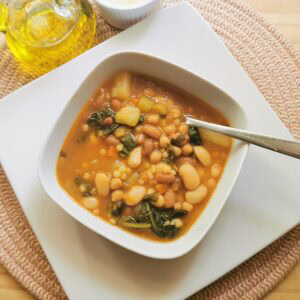Often called Sardinian longevity minestrone, this nutritious one-pot legume and vegetable rich soup is typical of an area in Sardinia described as one of the world’s blue zones. A cozy and nourishing recipe, Sardinian minestrone soup can be made with a variety of garden vegetables but always contains beans and fregola pasta.
What are blue zones?
First identified by journalist and National Geographic explorer Dan Buetter, blue zones are the places in the world with the healthiest, longest-living populations. They include Okinawa, Japan; Sardinia, Italy; Nicoya, Costa Rica; Ikaria, Greece; and Loma Linda, California.
Each blue zone features lifestyle choices or habits that Buetter believes contribute to the longevity of the people who live there. Diet is a contributory factor in all blue zones and is mainly plant based with very little meat consumed.
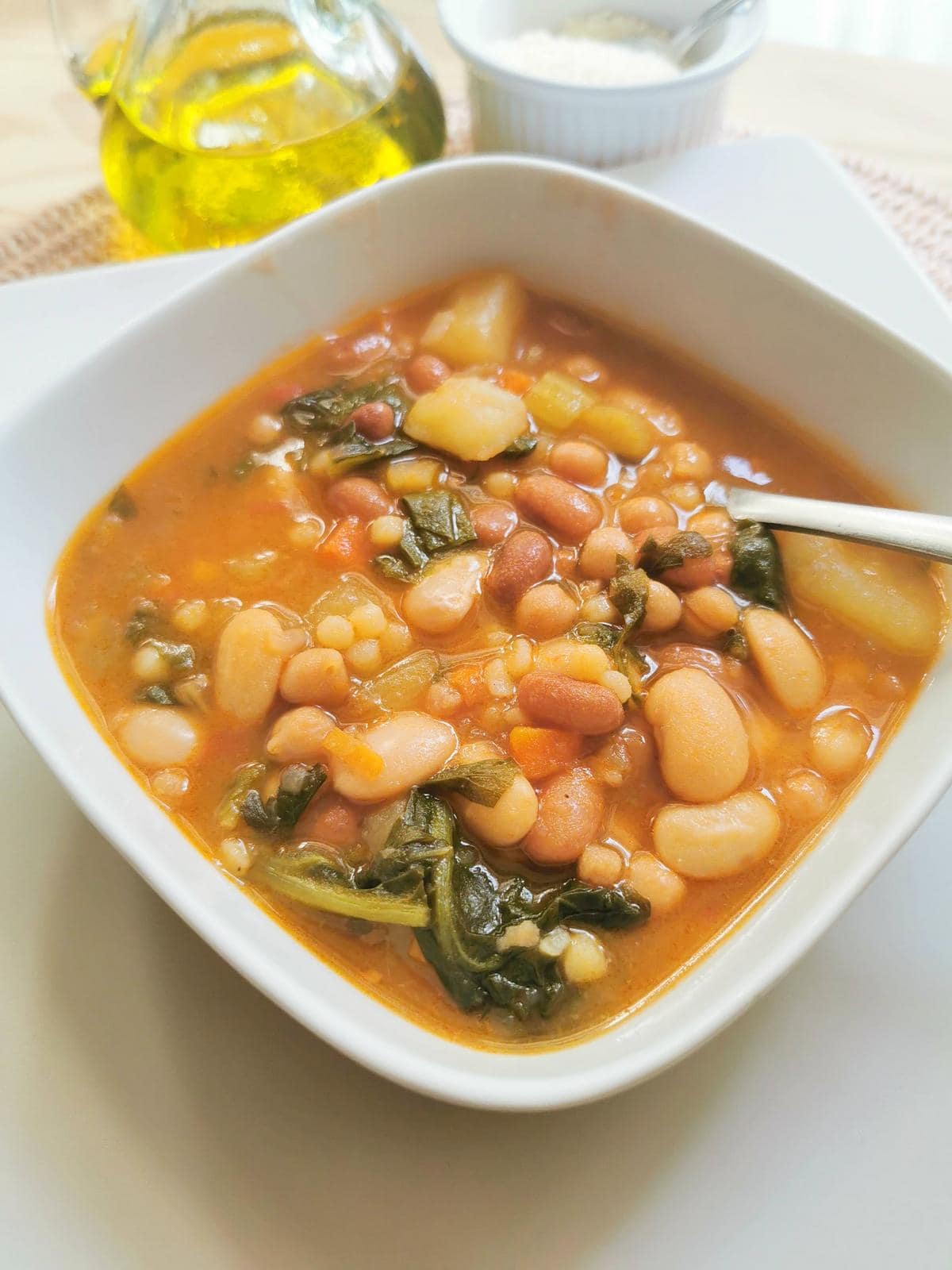
Longevity minestrone.
According to the blue zone website, this longevity minestrone is based on a recipe from a family in Sardinia who Dan Buetter visited whilst doing research there. He called them ‘the world’s longest lived family’.
In fact, the Melis family from Perdasdefogu, a small village in the province of Nuoro, Sardinia, were in the Guinness Book of Records for being the oldest family in history. They were nine siblings who reached a combined age of 851 (the oldest was 109).
According to Buetter, the Melis family ate the same lunch every day: sourdough bread, a glass of local wine and a special minestrone
The Sardinian longevity minestrone recipe I made is the one published on the bluezones website and a number of Italian websites. I had to substitute a couple of ingredients. You can, of course, use the original ingredients or mine, depending on taste and what you have available. (see ingredient notes)
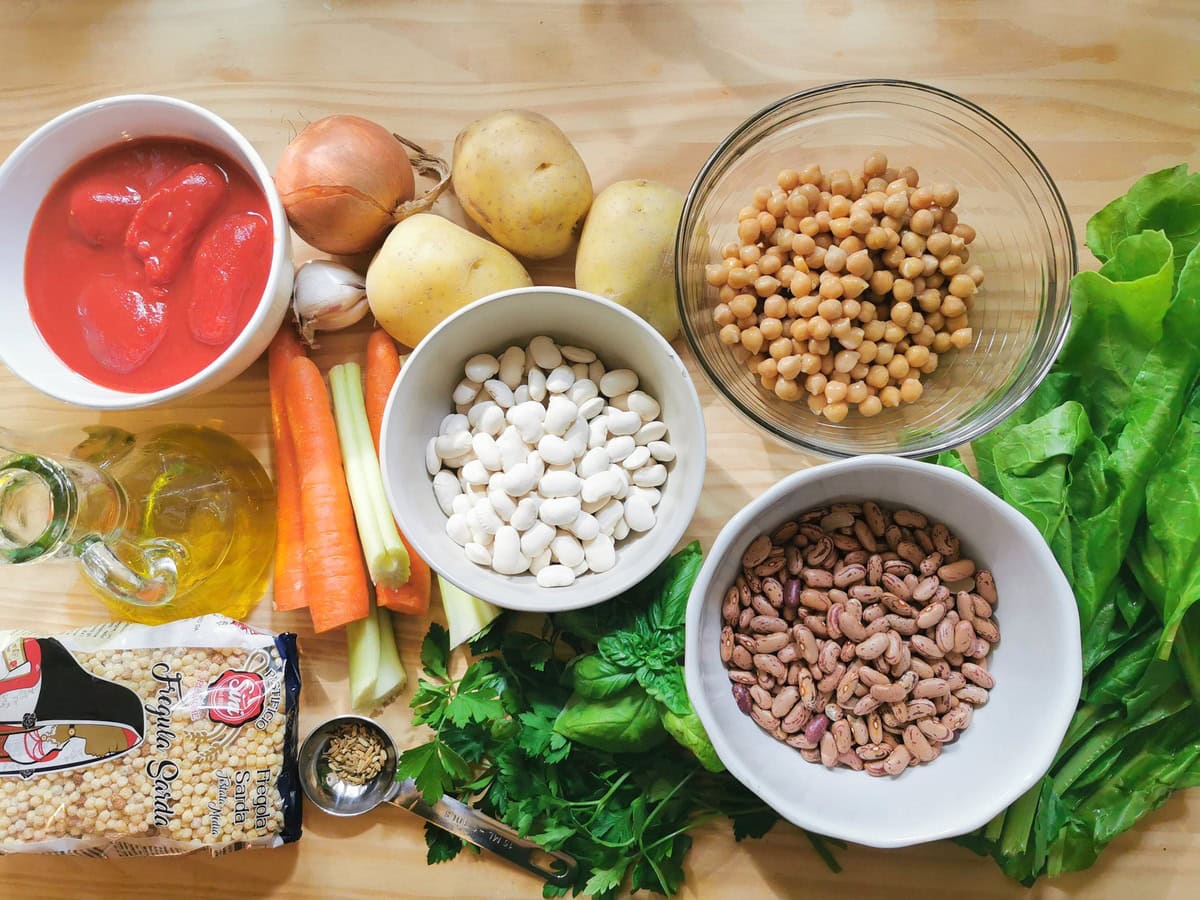
Ingredients for Sardinian minestrone.
Beans – I used a mix of white beans, borlotti beans (cranberry beans) and chickpeas. The original recipe calls for dried peeled fava beans (broad beans) instead of white beans. Beans make this minestrone hearty and protein-rich.
You can use canned beans for faster meal prep as dried beans require overnight soaking. However, dried beans are more nutritious, lower in sodium and have a superior texture and flavor. You can also use other types of beans such as pinto beans.
Onion, carrot & celery: the classic base of many Italian soup and sauce recipes known as soffritto in Italian. These veggies need to be cut into small pieces and sautéed until softened.
Olive oil: to sauté the soffritto. Extra virgin olive oil is best for flavor and nutritional value, but you can also use a normal olive oil.
Garlic: I used 3 cloves of garlic finely chopped. Add the garlic once the soffritto has softened as it burns easily. Burnt garlic is bitter garlic.
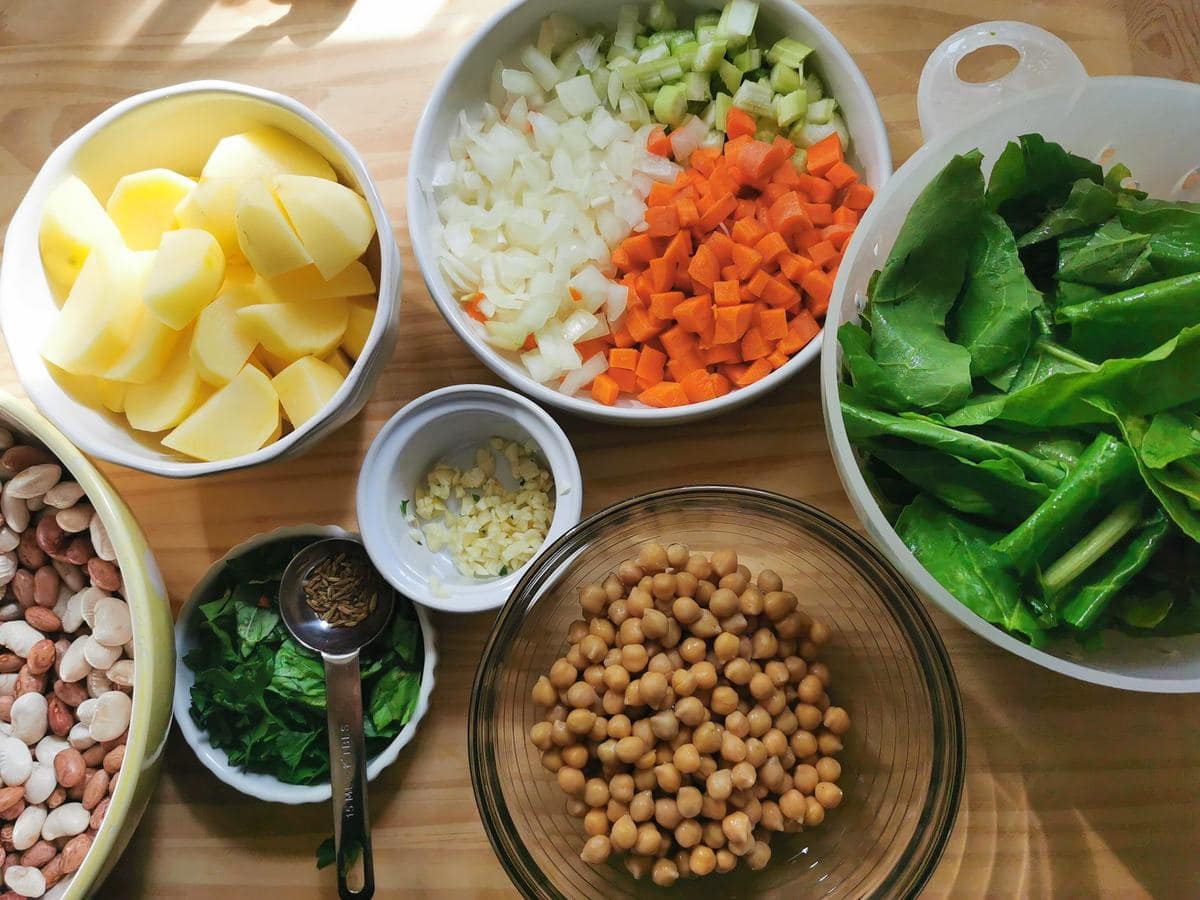
Fresh herbs: Fresh parsley and fresh basil. Some recipes also call for a bay leaves, fresh thyme and rosemary. The recipe I followed didn’t include them, but of course you can if you wish!
Tomatoes: This recipe calls for canned peeled tomatoes. I used San Marzano. You can use crushed tomatoes instead. Adding a little tomato paste will give this delicious soup a stronger tomato flavor.
Potatoes: 3-4 peeled and cubed yellow potatoes. These help to thicken the soup and add creaminess as well.
Fennel: The recipe for this Sardinian minestrone includes chopped fennel. I used fennel seeds instead as fresh fennel wasn’t available. You can use either.
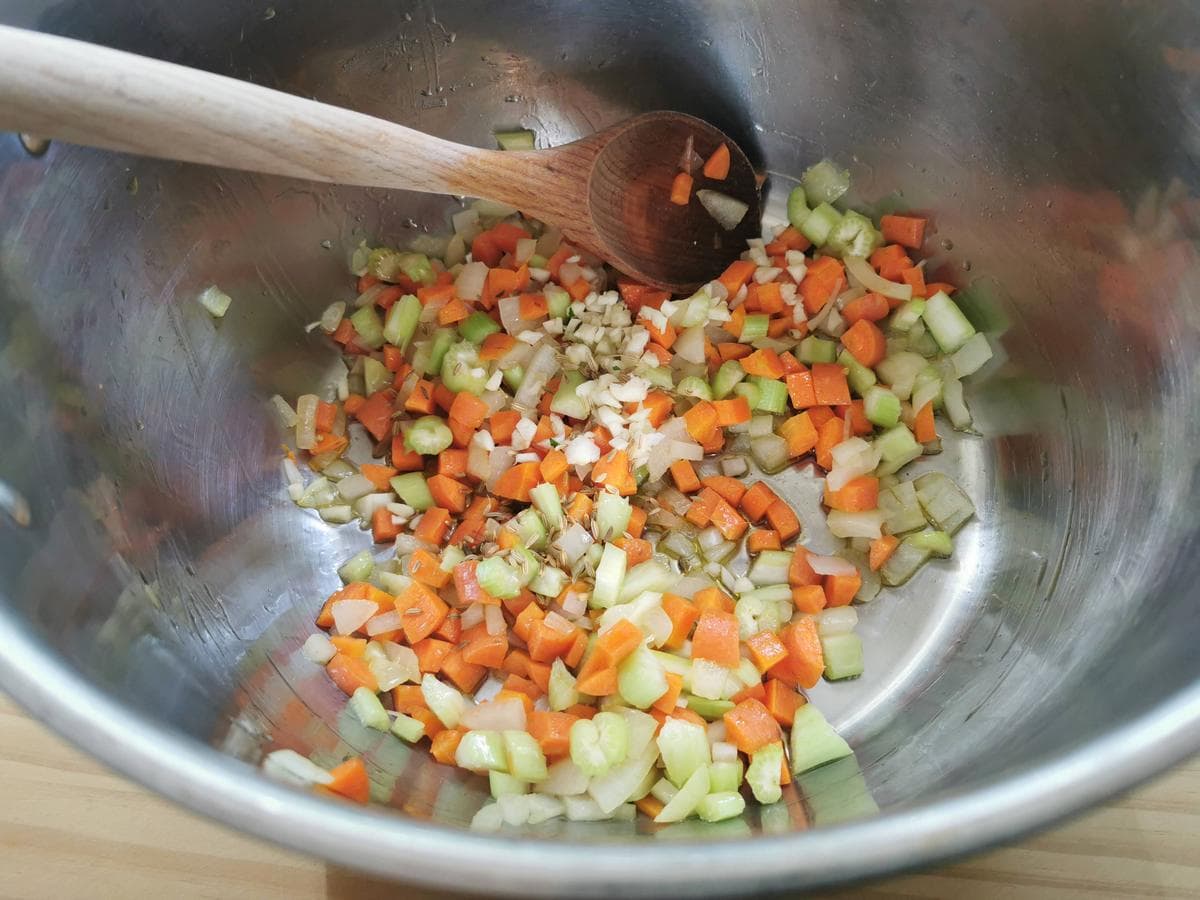
Optional ingredients : I like to have greens in my soup, so I added some chard to my Sardinian minestrone. Spinach, tuscan kale or swiss chard are other leaf greens you can use. Or leave the greens out.
Feel free to add other fresh seasonal vegetables from the garden or market, such as zucchini, cabbage, green beans, and cauliflower or broccoli florets.
Fregola: Fregola is a round toasted small pasta from Sardinia. If you don’t have fregola, use Israeli couscous or orzo pasta.
Pecorino cheese: Italians usually serve minestrone with a grated hard cheese such as pecorino or Parmigiano.
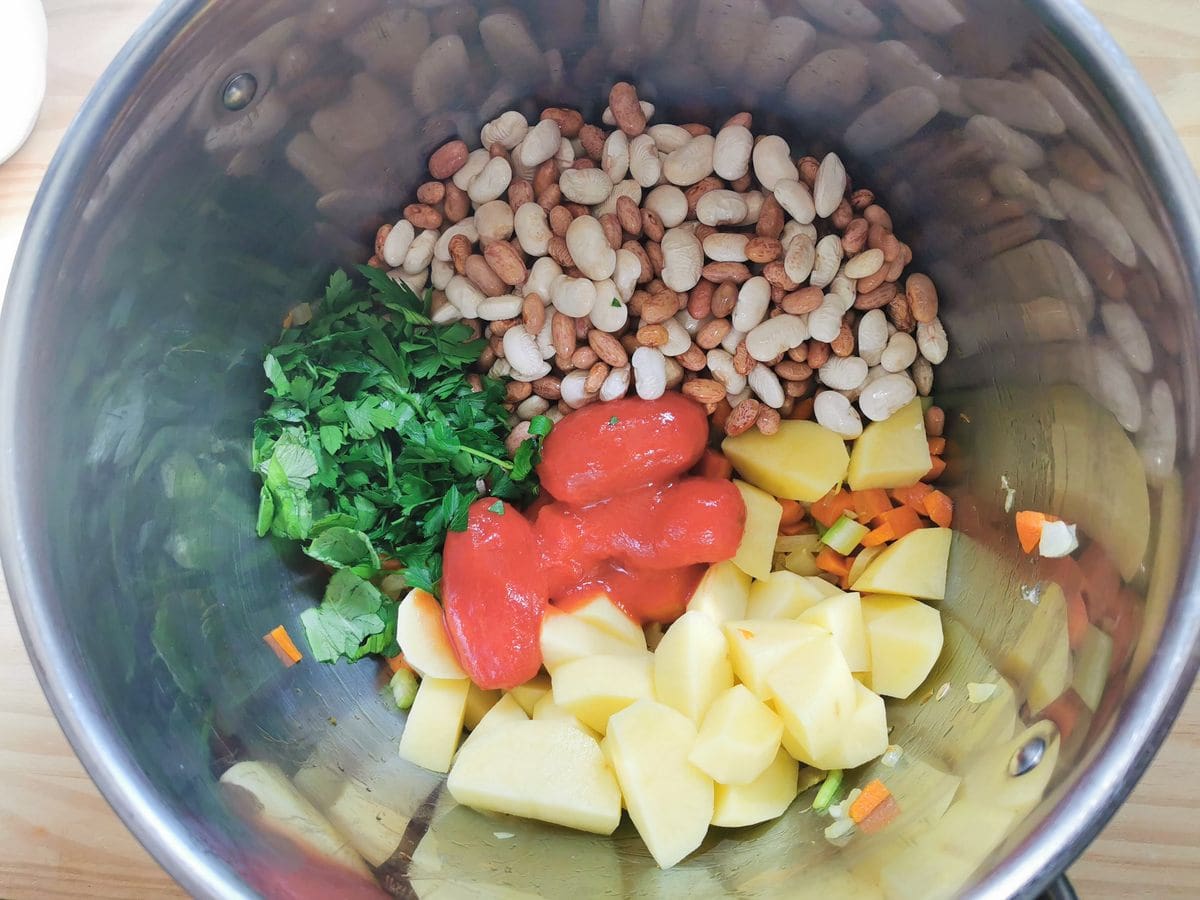
Step be Step instructions.
The day before, soak the fava or white beans, cranberry beans, and chickpeas in a large pan of water for at least 8 hours or overnight. Drain and rinse well.
1) Prepare all the vegetables: wash and chop the carrots and celery into small pieces, peel and chop the garlic and onion, peel and cube the potatoes and wash the greens and herbs. Wash and chop the fresh fennel (if using)
2) Heat the olive oil in a large pot or Dutch oven set over a medium heat. Add the onion, carrots, and celery; sauté until softened but not browned, about 5 minutes. Add the garlic and fennel seeds (if using) cook until fragrant.
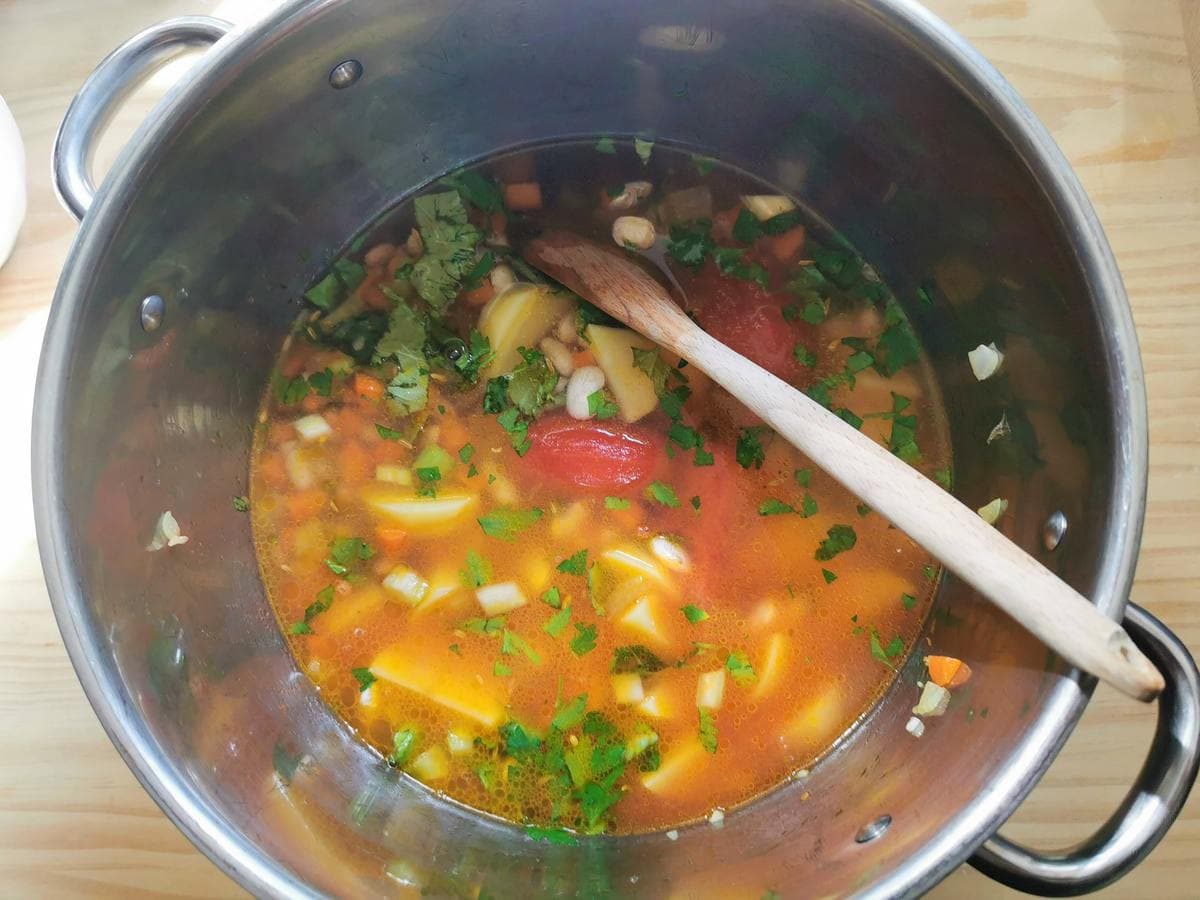
3) Add in the tomatoes, potatoes, fresh fennel (if using), parsley, and basil, as well as the drained beans and chickpeas. Pour in enough water or vegetable broth so that everything is submerged by 1 inch (2.5cm).
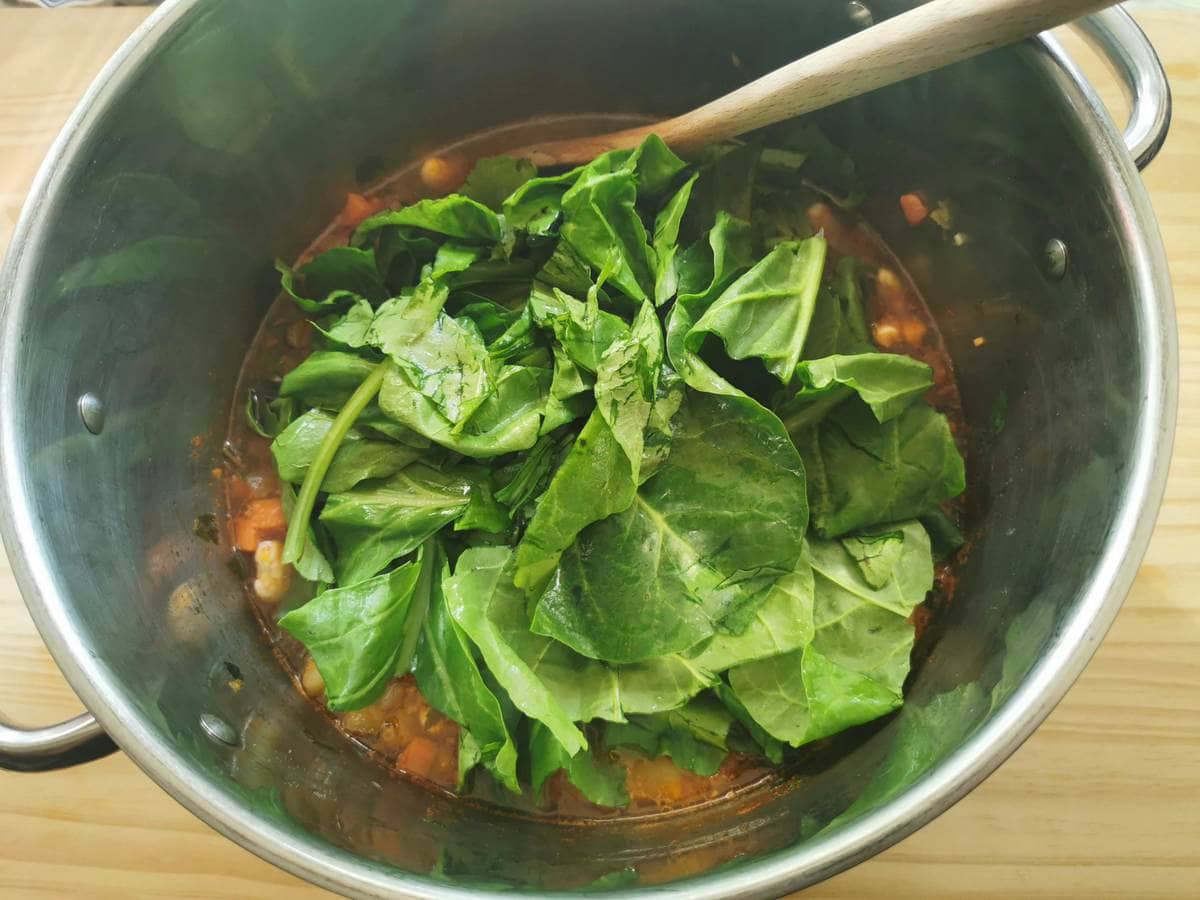
4) Raise the heat to high and bring to a full boil. Reduce the heat to low and simmer slowly for about 90 minutes, uncovered, until the beans are cooked. Add more water as necessary if the mixture gets too thick. Add the leafy greens if using and allow them to wilt.
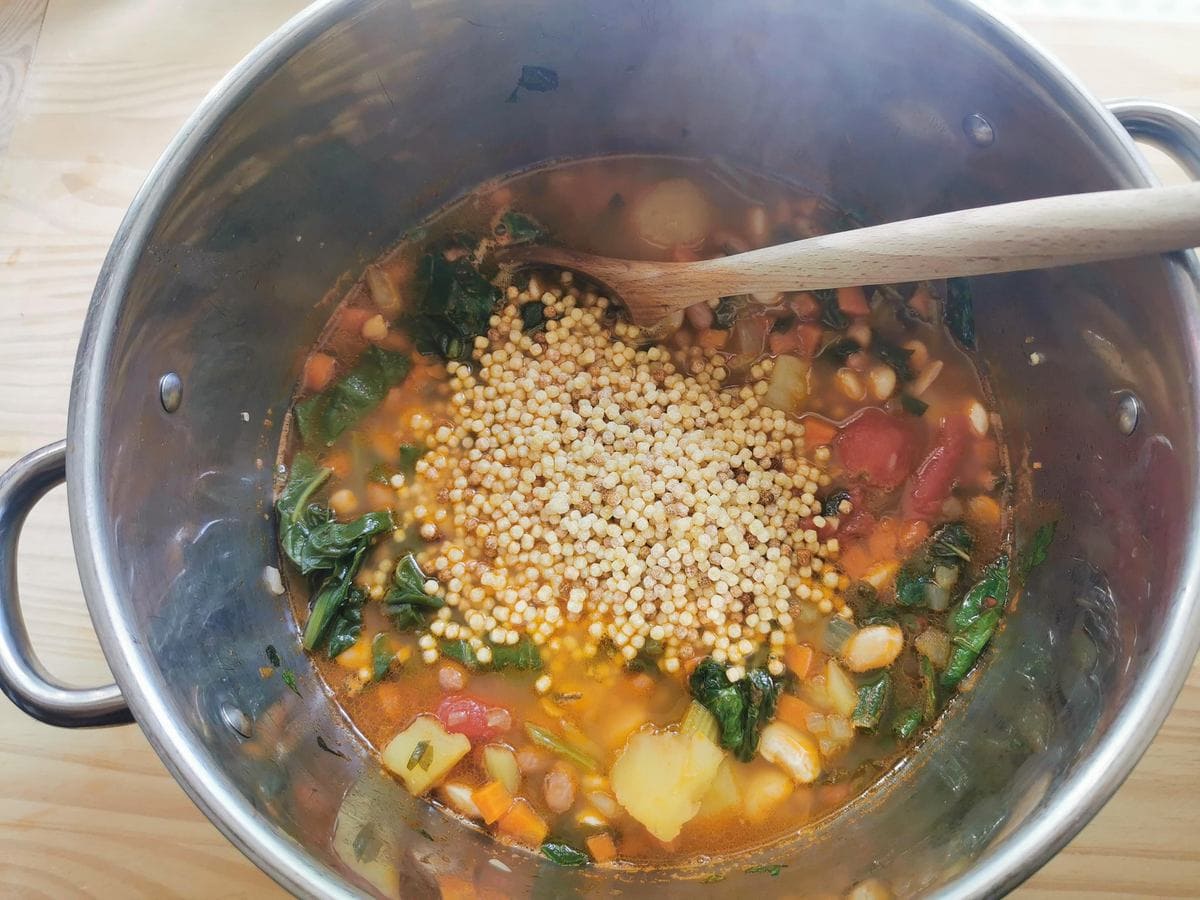
5) Stir in the fregola pasta, salt, and pepper. Add a couple of cups water if the soup seems too dry. Continue simmering uncovered for about 10 minutes until the pasta is tender.
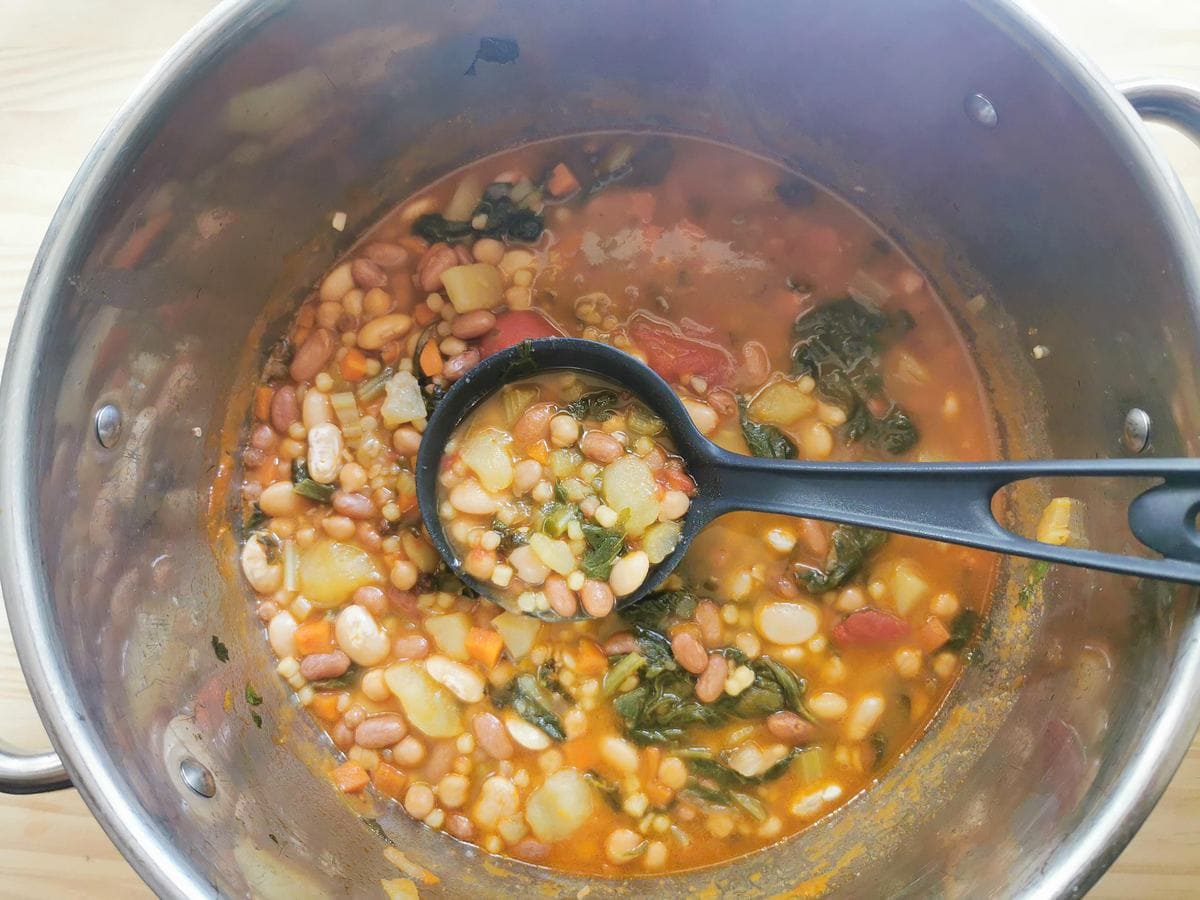
Serve your Sardinian longevity minestrone in bowls with a dash of extra virgin olive oil and some grated pecorino romano cheese if using.
NB Italian pecorino is made with animal rennet so it’s not vegetarian. To keep this recipe vegetarian use a vegetarian parmesan cheese or omit the cheese.
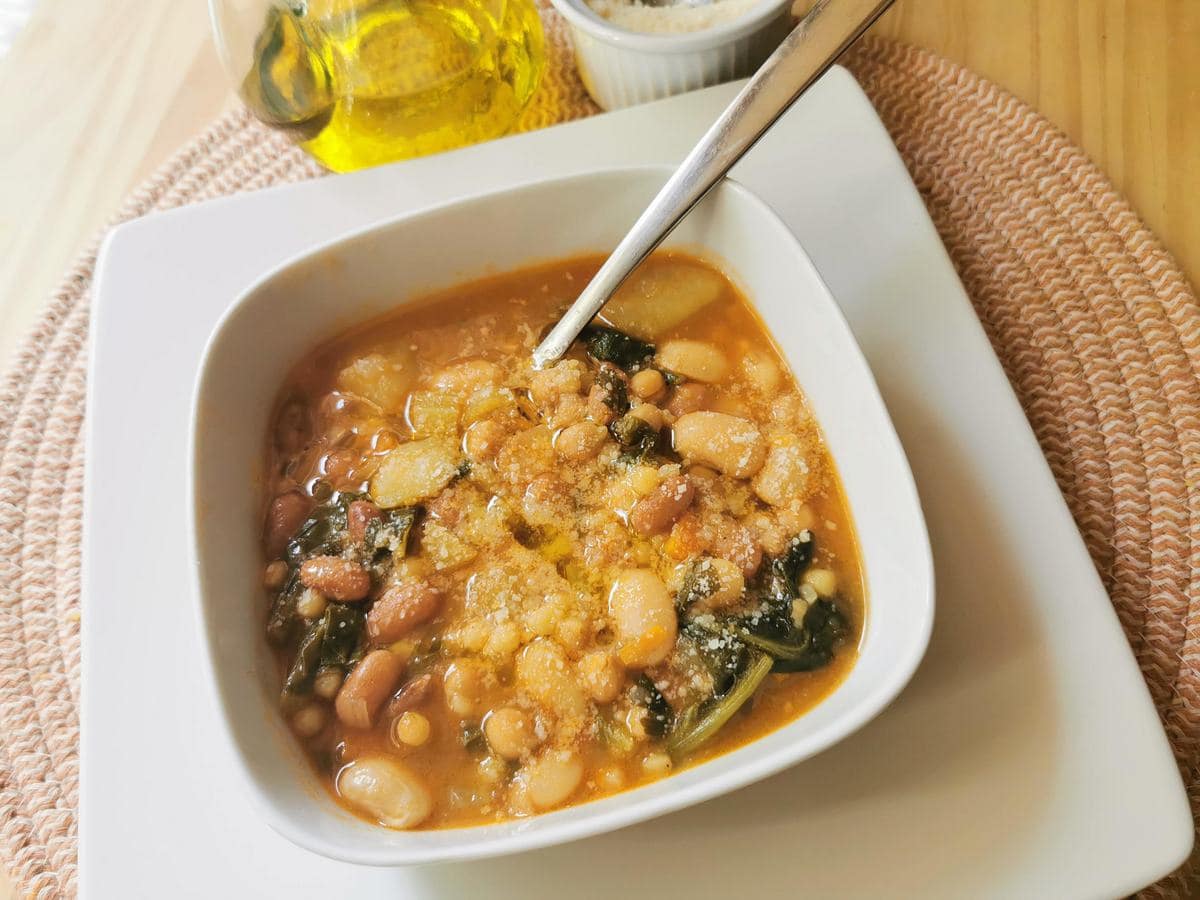
What to do with leftovers
This longevity soup tastes even better the next day! So it’s worth making extra and keeping it in the fridge in an airtight container. It will stay good for 3-4 days. I don’t recommend freezing leftovers as the ingredients may get soggy when defrosted and reheated.
Other types of Italian minestrone.
Of course, Sardinian minestrone is one of many versions of minestrone soup here in Italy. Traditionally, minestrone is a seasonal vegetable soup which normally has some thickening plant-based ingredients such as squash, potatoes or legumes, plus, a variety of veggies cut into pieces and rice, pasta or grains.
The ingredients for minestrone depend on the season and, sometimes , the part of Italy the soup comes from.
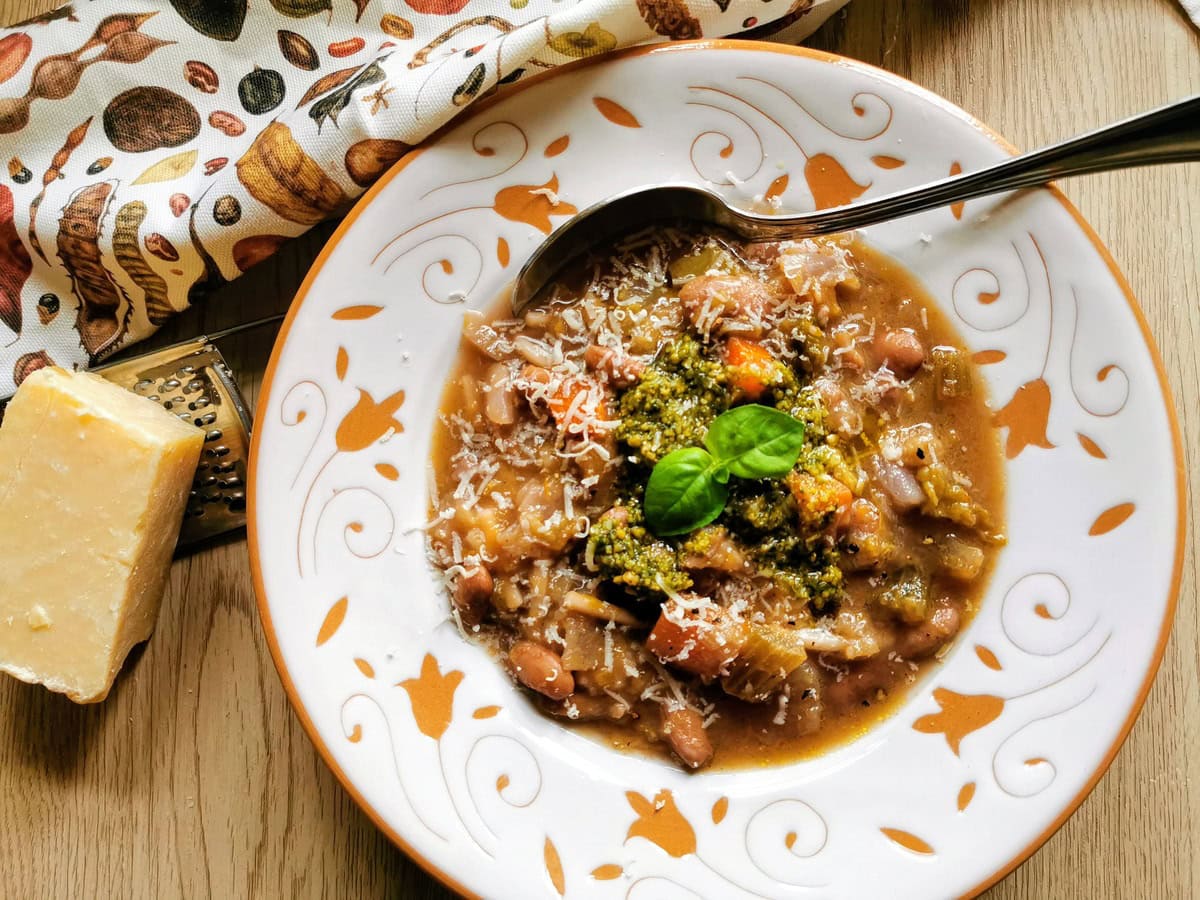
For example, Ligurian minestrone has basil pesto in it, and minestrone Milanese often includes a fatty pork cut like guanciale, as well as rice instead of pasta. However, I like to make minestrone from Milan with orzo pasta which looks like rice.
One of the best minestrone recipes for autumn/fall is Tuscan minestrone which is rich in leafy greens, beans and pumpkin or squash!
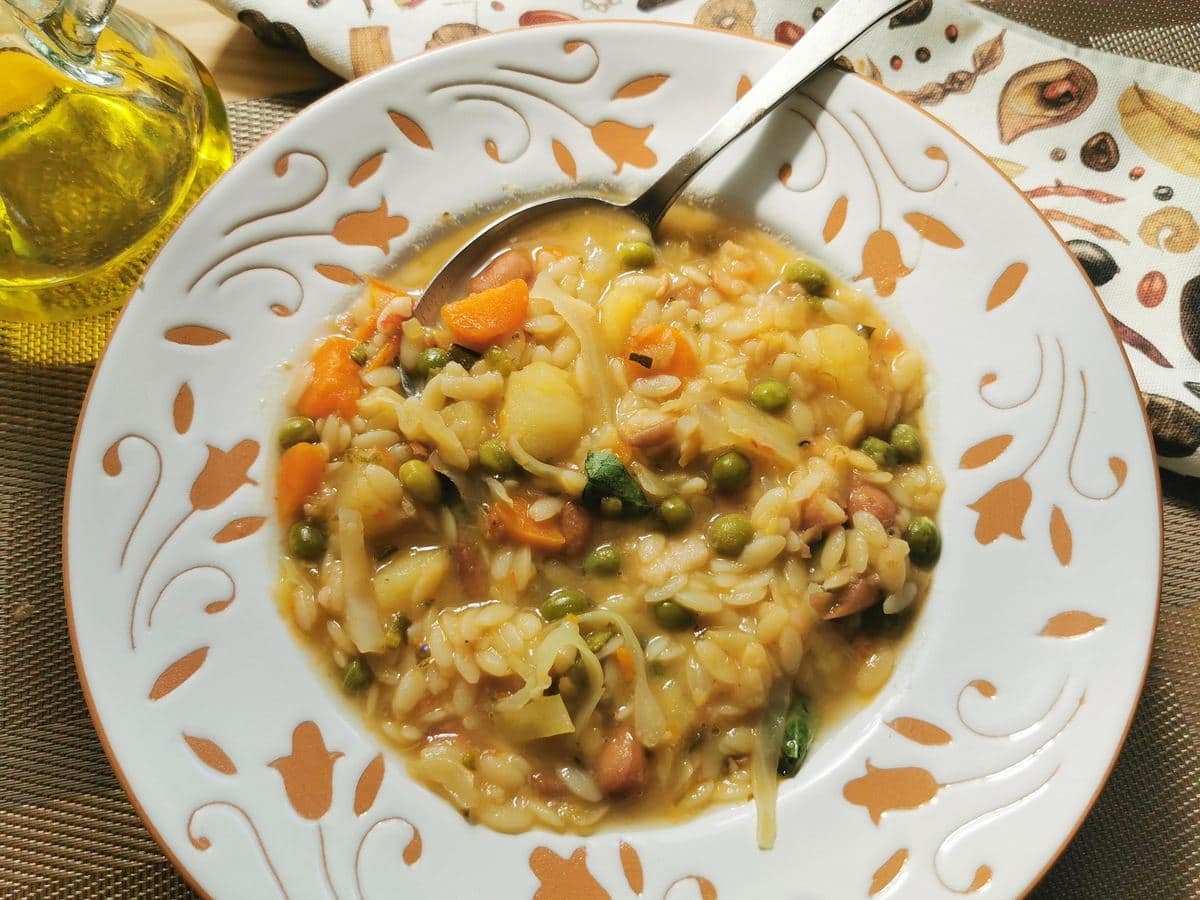
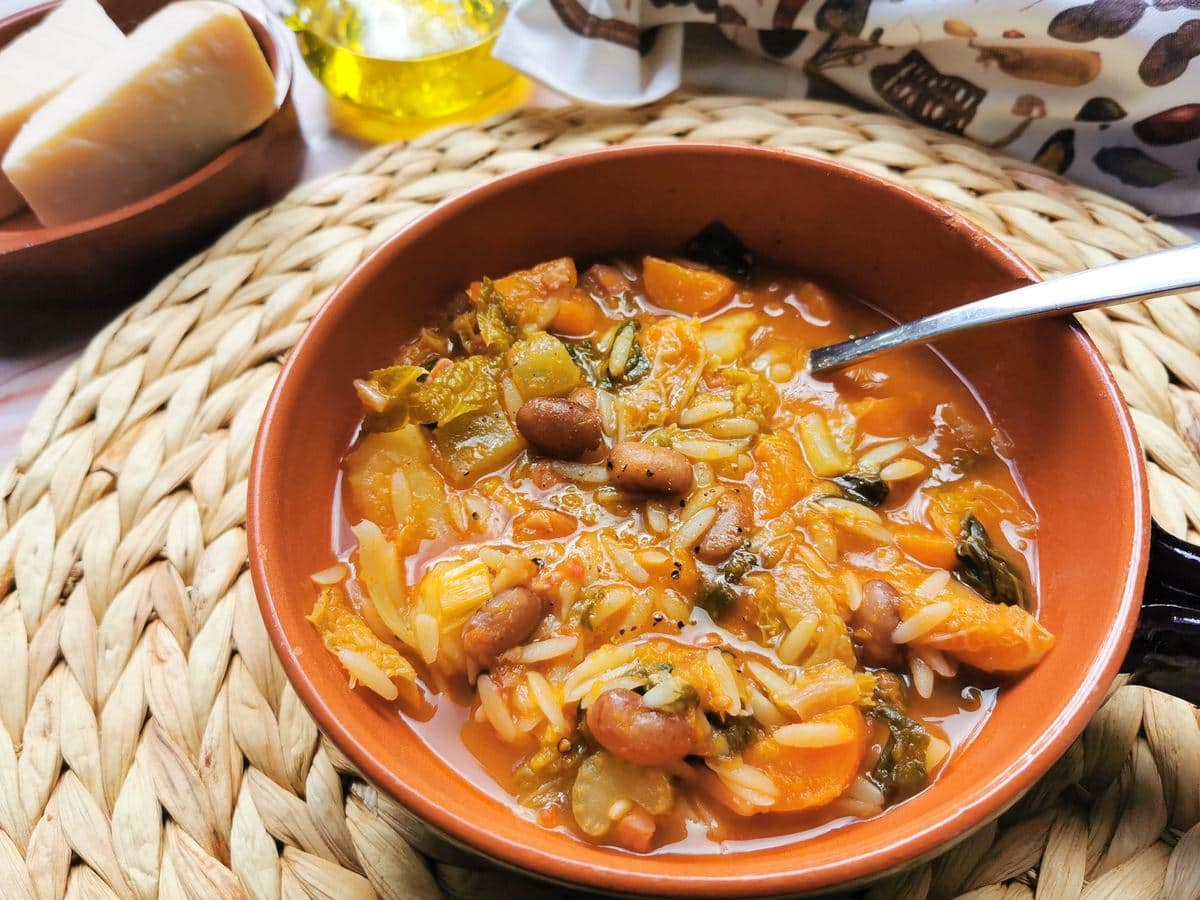
Let me know what you think
If you try this Sardinian minestrone recipe, I’d love to know what you think. Although it has quite a few ingredients, this homemade soup is actually an easy recipe and the perfect way to give your family a wholesome meal any time of the year.
You can write a comment here on the blog, email me or comment on the Pasta Project Facebook page. I’d love to hear from you.
Buon appetito!
Pin for later.
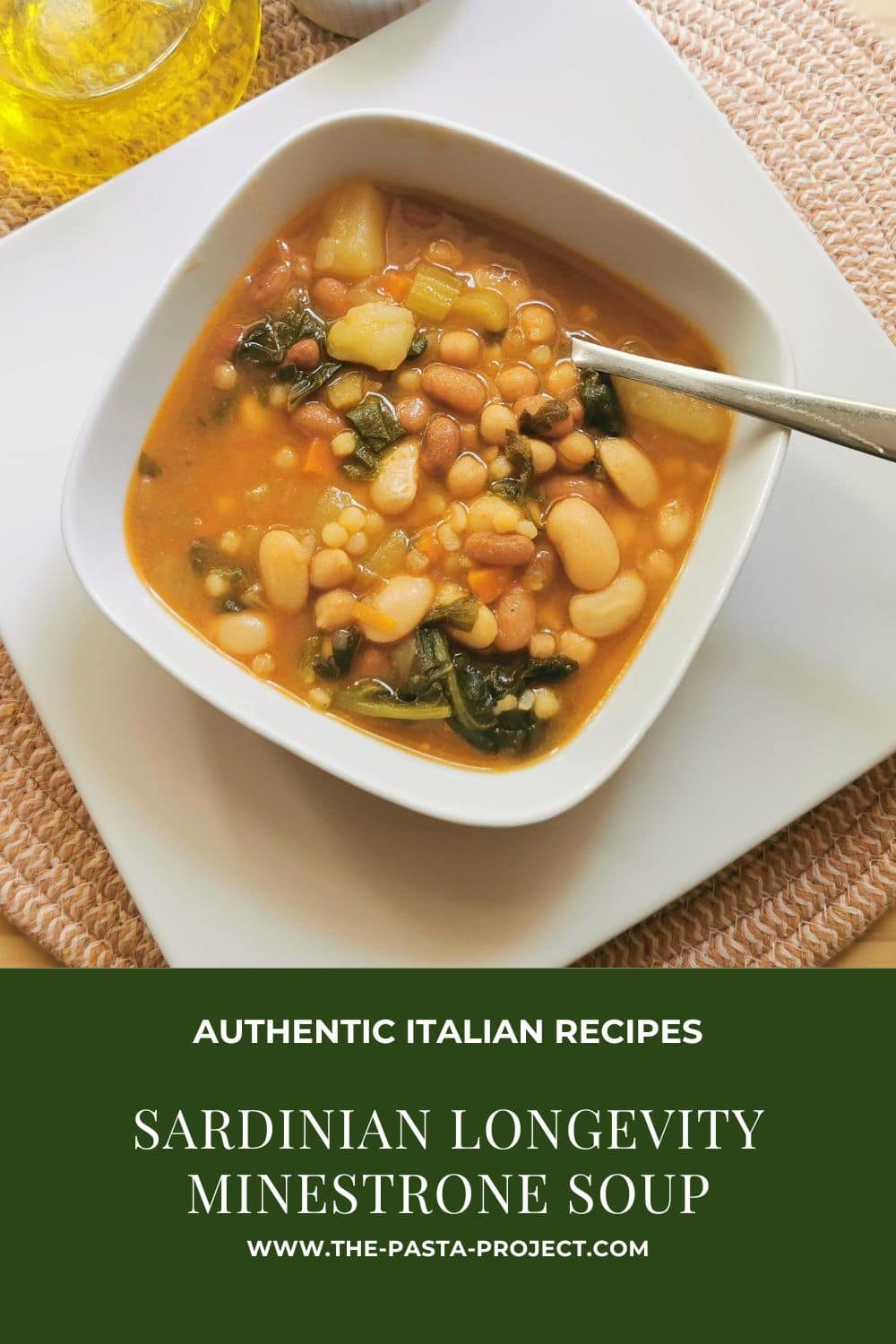
Reader Interactions

